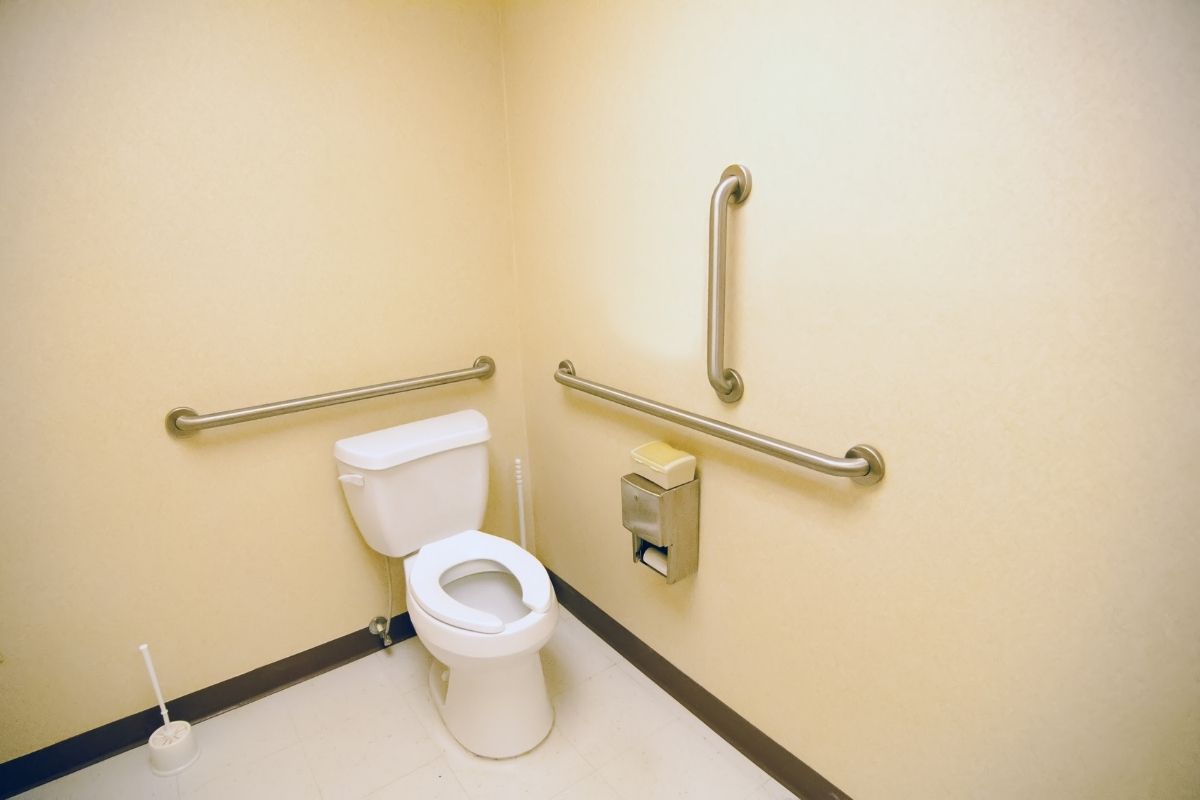While studying different toilet designs, you might have come across the term ‘ADA-compliant toilets’.
ADA-Compliant toilets are handicap toilets designed for accommodating handicapped people. They provide a comfortable way to use the washroom for people with disabilities. It is a universally recognized toilet design based on the Americans With Disabilities Act’s (ADA) standards.
If you are looking for a complete guide to ADA-compliant toilets, you have landed on the right page.
Because here, I will be answering all the frequently asked questions about ADA-Compliant toilets in this article and help you with all your related queries.
Let’s get started.
What Does ADA-Compliant Stand For?
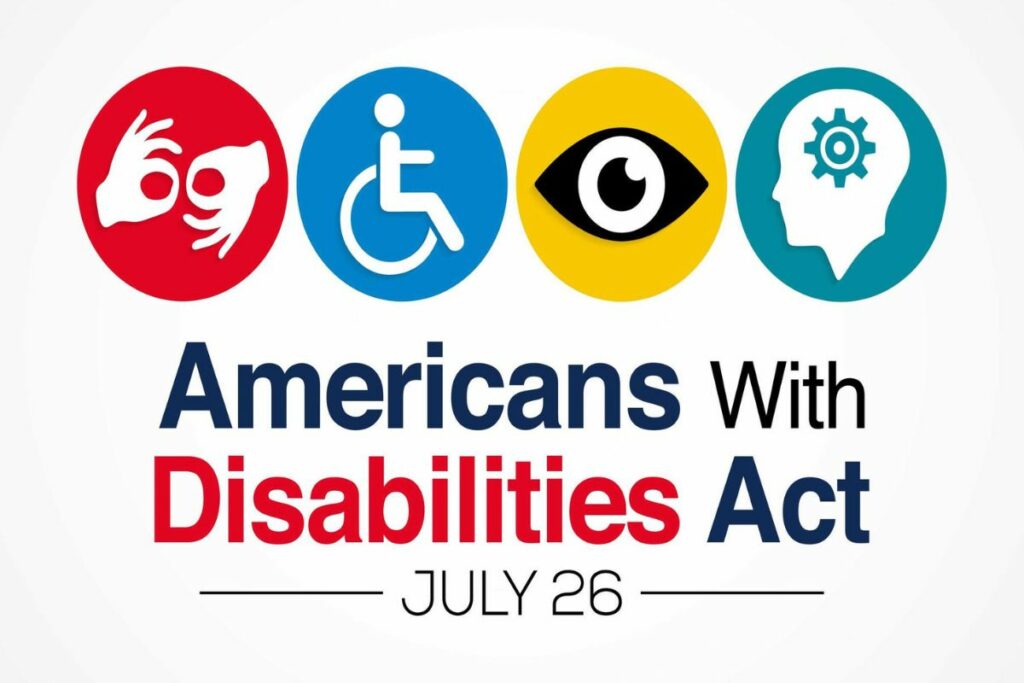
‘ADA’ Stands for Americans With Disabilities Act, signed by President George Bush on July 26, 1960. It is a comprehensive piece of civil rights to secure basic human rights for the disabled children and the elderly.
Things have never been the same for people with disabilities. People were never considerate of them.
Daily routine things were an obstacle for them until George Bush, the president of the United States of America, declared a piece of human rights.
This declaration contained several bullet points to ensure every business and the public restroom has reasonable accommodations for people with disabilities.
From that day, the concept of ADA-compliant toilets came into being.
Who Is Best-Suited for ADA Toilets?
Officially, ADA toilets are best suited for people with physical disabilities, but many others use them according to their needs. They include people with bowel conditions, people with mental disabilities, and the ones who are unable to control their balance.
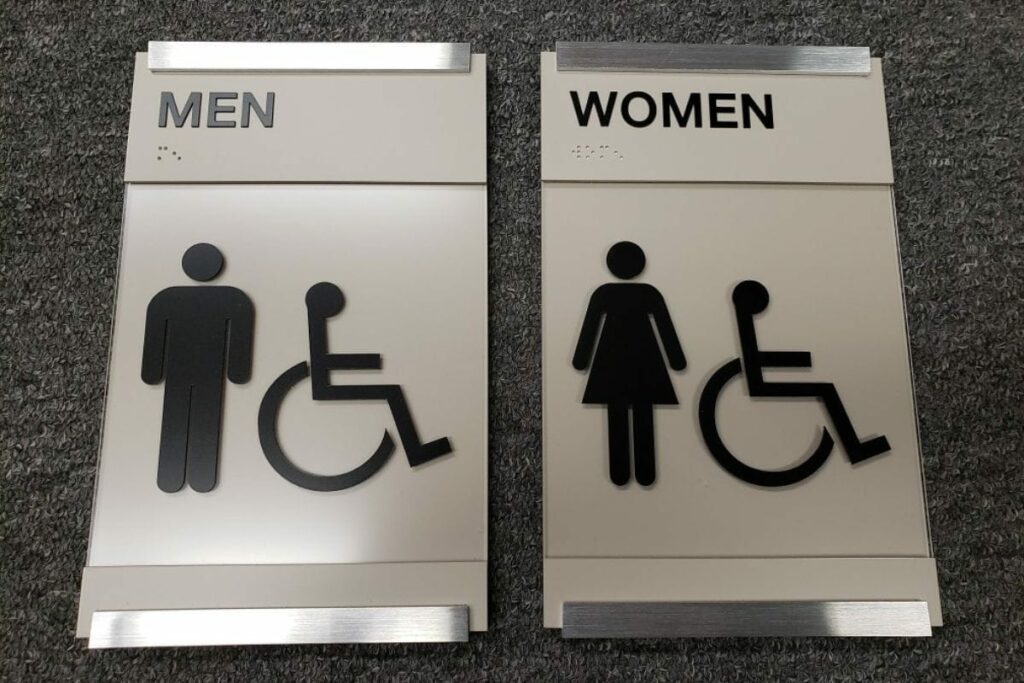
People in a wheelchair or physically disabled individuals are the most common individuals using ADA toilets.
According to the Americans with disabilities act 1960, it is prohibited to discriminate against people belonging to public or private sectors because of their physical disabilities. This act gave origin to ADA -compliant things, like toilets.
But with time, people came across different ways to utilize this resource according to the situation. Following is a list of people who are well-suited for this exclusively built toilet:
- People with physical impairments
- Wheelchair people
- Individuals with bowel and bladder conditions
- People with balancing/gripping issues.
- People with mental disabilities
What Are the Features Of a Perfect ADA Toilet?
Toilets are typically inspected closely and checked to see whether they are safe to use or not. Features that make up a perfect ADA toilet include spacious toilet stalls with ramp and handrails, raised toilet seat, low mirror and sink, soap and other essentials in reach, and more.
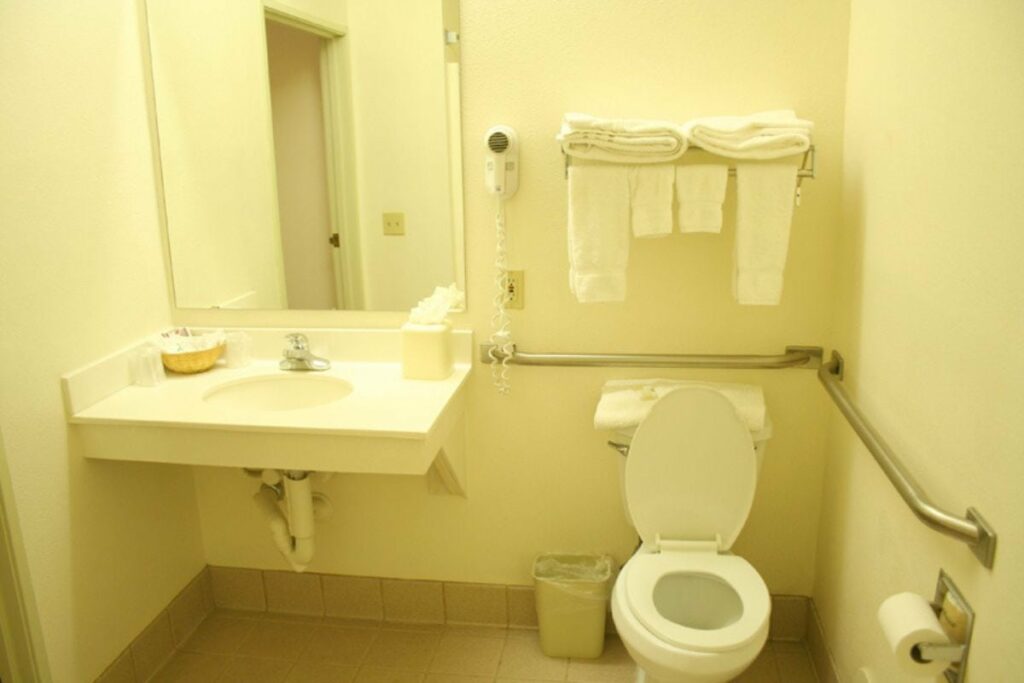
You might have witnessed that ADA-compliant toilets are different from traditional toilets. But what makes them different? Let’s dive deep into the nitty-gritty of these components and learn more about them to make your toilets more accessible.
More Height
ADA-compliant toilet bowls are higher than traditional toilets. They are two to three inches higher than regular ones.
Spacious Toilet Stalls
It is a vital component of an ADA toilet. People with physical impairments usually use wheelchairs or clutches that occupy space. If the stall is narrow, their mobility would be constricted.
To allow for the person to transfer from the wheelchair to the toilet, a 60″ diameter of clear area in front of the toilet is also necessary. This area is off-limits to the swinging door.
Doors
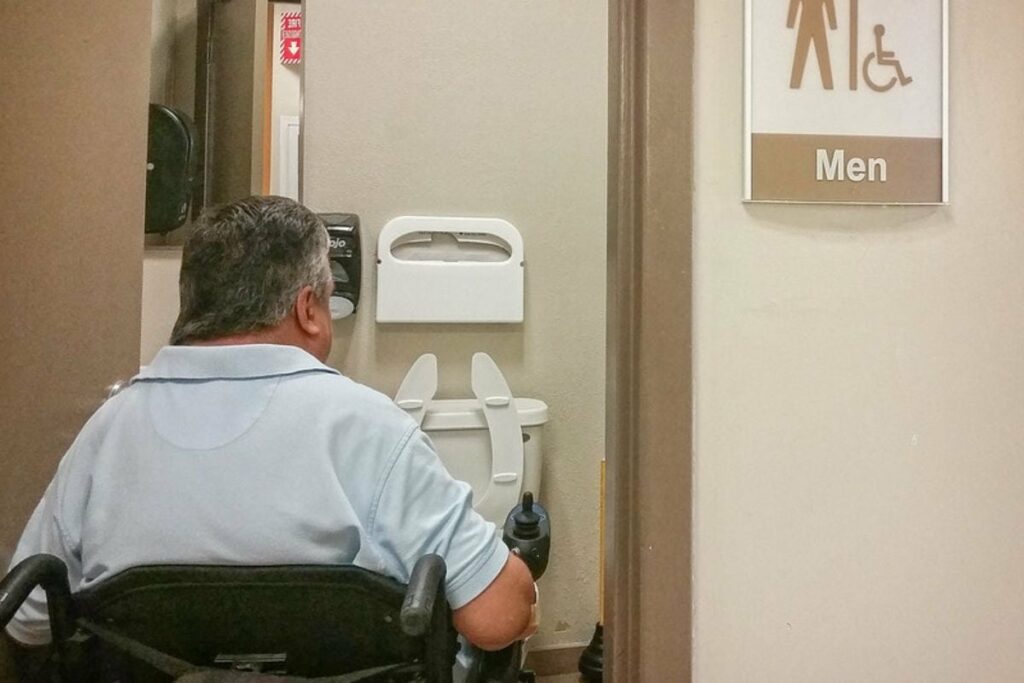
Normally, the doors are built to accommodate an individual. But in this case, the doors need to be wider to allow a wheelchair to enter.
The minimum length of these doors should be 32 inches.
Also, the door should be lightweight to require minimal energy to close, and the door locks should be reachable for people.
Handrails
Handrails are a component of ADA toilets. They help provide stability, support, and balance for anyone using the toilet.
Mirror and Sink
Make sure to place the mirrors and sink in an accessible place for users without any problems while occupying the room.
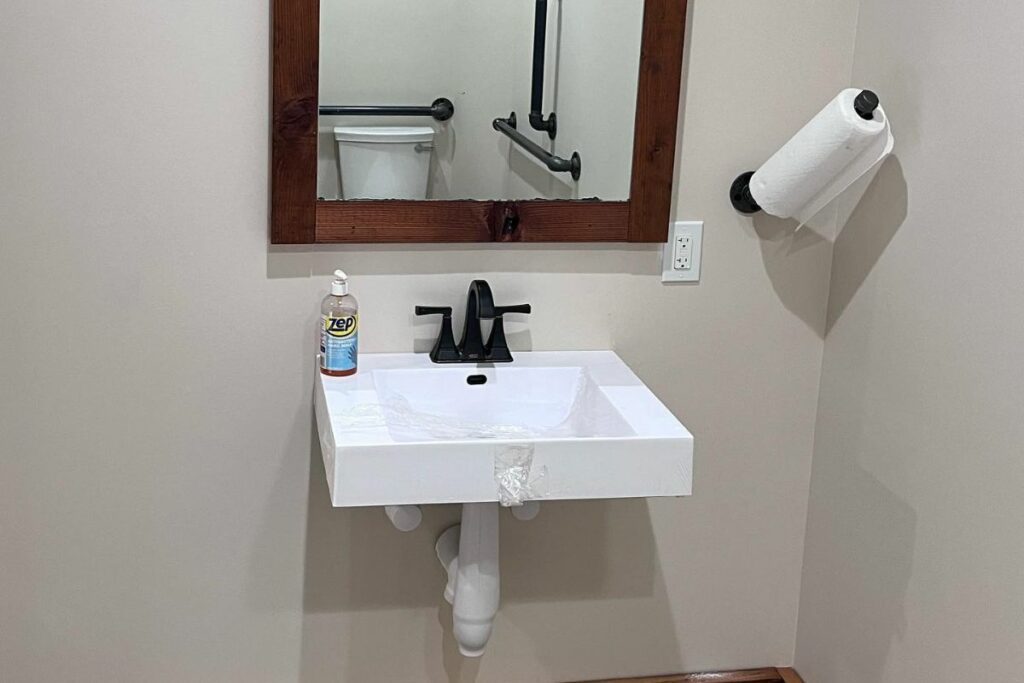
They should be designed in a way that users in a wheelchair can access them without standing up.
Soap and Other Essentials
The places for the amenities are carefully selected. Toilet paper should be available near the toilet. The soap and paper towels should be placed near the sink.
This will help people with a mobility aid, as they would not have to move again and again for these toilet essentials.
Emergency Call Buttons
Physically challenged people are prone to accidents. Hence, it is important to provide emergency call buttons near the toilets.
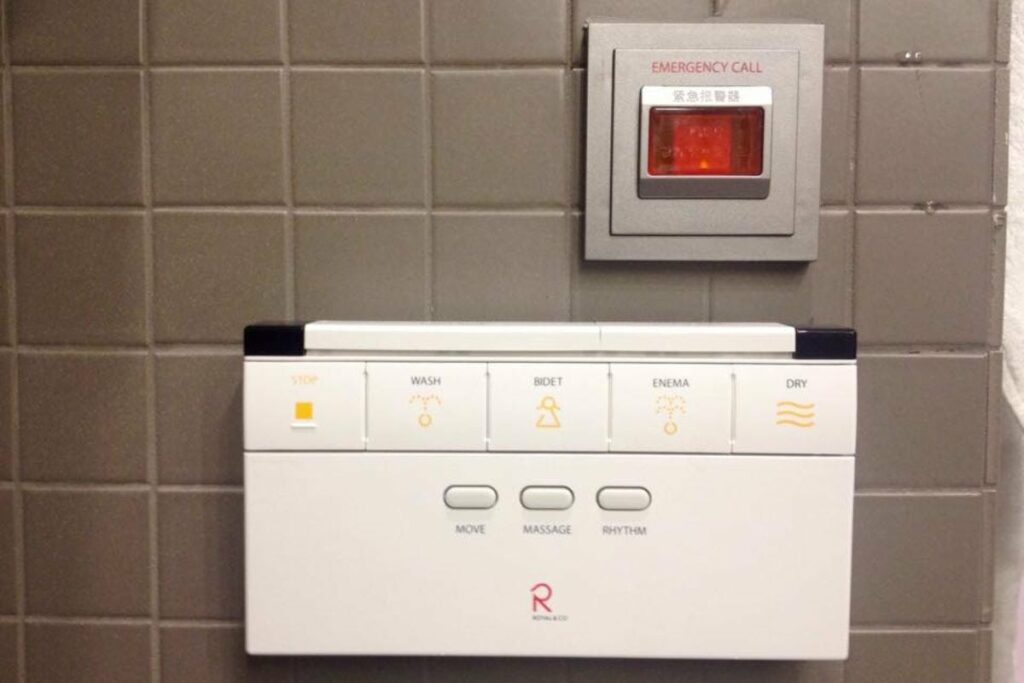
In case of an emergency, people with disabilities need to be able to reach the buttons easily. They should also be placed close to the toilet.
Why Is It Necessary to Meet All the Bathroom Requirements for ADA-Compliant Toilets?
There are specific requirements for accessible toilets according to the ADA standards. They are listed for a reason to provide for an inclusive society and cater to the needs of the disabled. If any of the conditions is not met, it can result in massive accidents and harm the patients.
People have overlooked multiple requirements like space, infrastructure, etc while designing or installing ADA toilets.
This non-compliance can be a serious problem and may prevent bathroom usage for people with disabilities.
This ignorance can also lead to severe accidents due to missing handrails in the bathroom or the absence of a ramp for a wheelchair. This situation can result in lawsuits and legal cases against the business or public institution.
Why Are ADA Toilets Best for Disabled People?
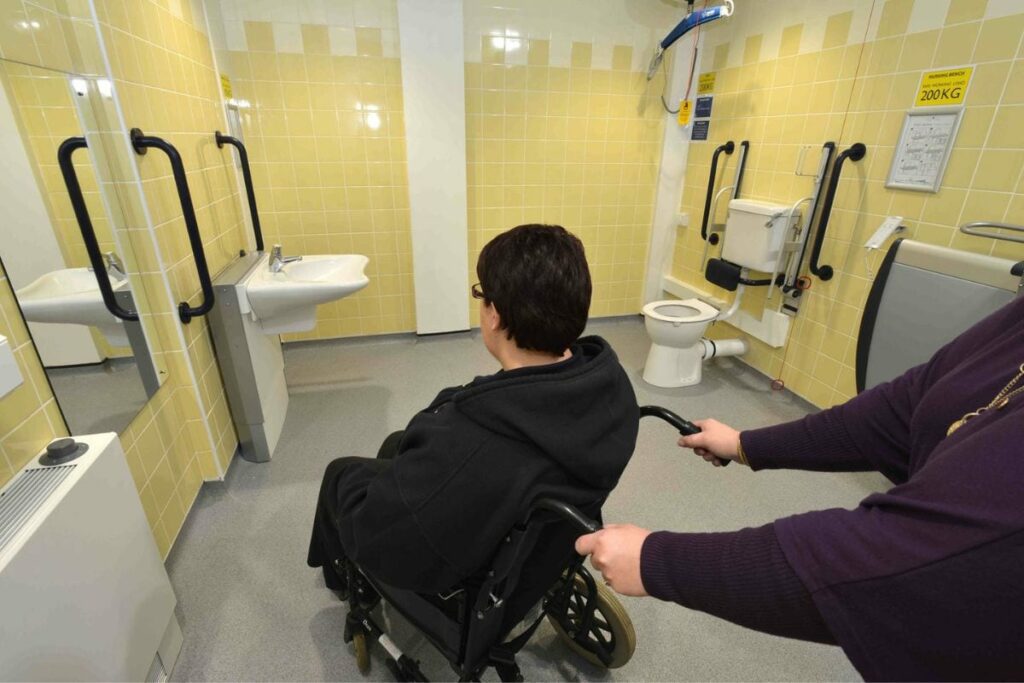
ADA toilets are designed to be more accessible and accommodate people with disabilities. It is different from the standard toilets. Thus, it is designed exclusively with professional help. These ADA toilets are convenient, promote inclusivity, and guarantee lesser tripping hazards for such people.
Inclusivity
If you are planning an event or running a business where you are unaware of who might attend the event or shop at your business, you must be prepared to avoid any chaos.
ADA- toilets play a vital role in bringing back inclusivity into society, as you, the host/owner, show your best interest in providing accessibility for associated disabled people.
Easier Access
The addition of ADA-compliant toilets can make the washroom accessible for every other person. It will allow weak and disabled people in your family to perform daily sanitation conveniently, without any discomfort.
Improved Safety
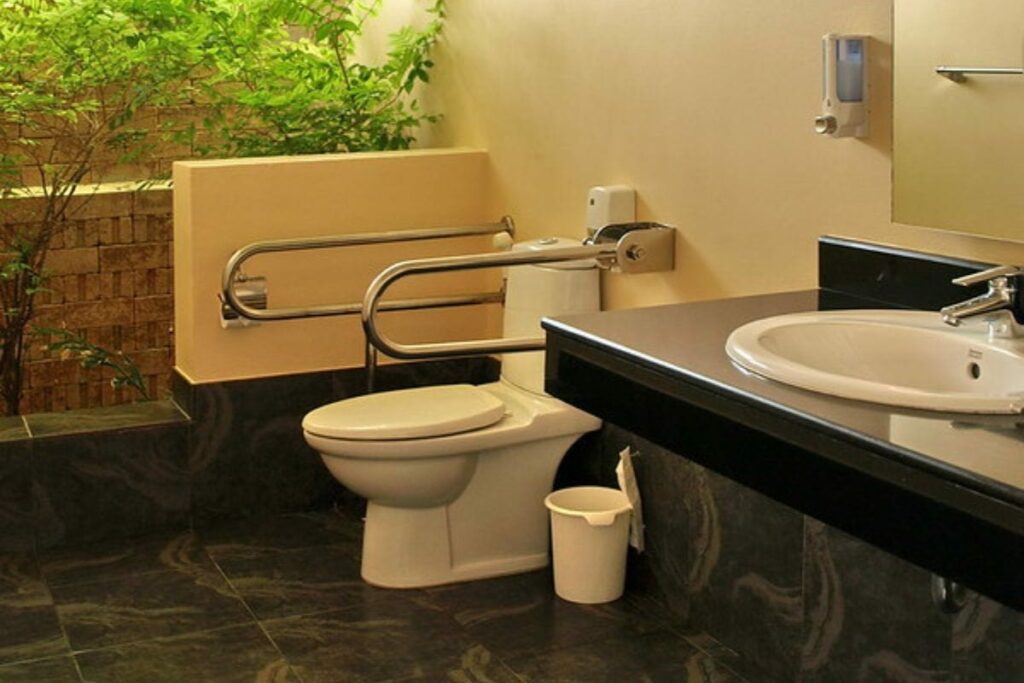
When this toilet gives easy access to people with impairments, it also provides guaranteed safety to such users.
With added features like handrails, ramps, and low sinks, there is almost no need for extra mobility, reducing the risk of washroom accidents.
Tips You Should Consider While Buying an ADA-Compliant Toilet
When choosing the best ADA-compliant toilet, you need to consider the toilet style, toilet bowl depth, toilet seat height, toilet bowl shape, wheelchair leg rests, and weight capacity.
You need to consider some features if you don’t want to regret your ADA-compliant toilet purchase. These are as follows:
Toilet Styles
Toilets come in different styles and types, according to your comfortability. For ADA toilets, wall-mounted toilets are preferred for wheelchair users.
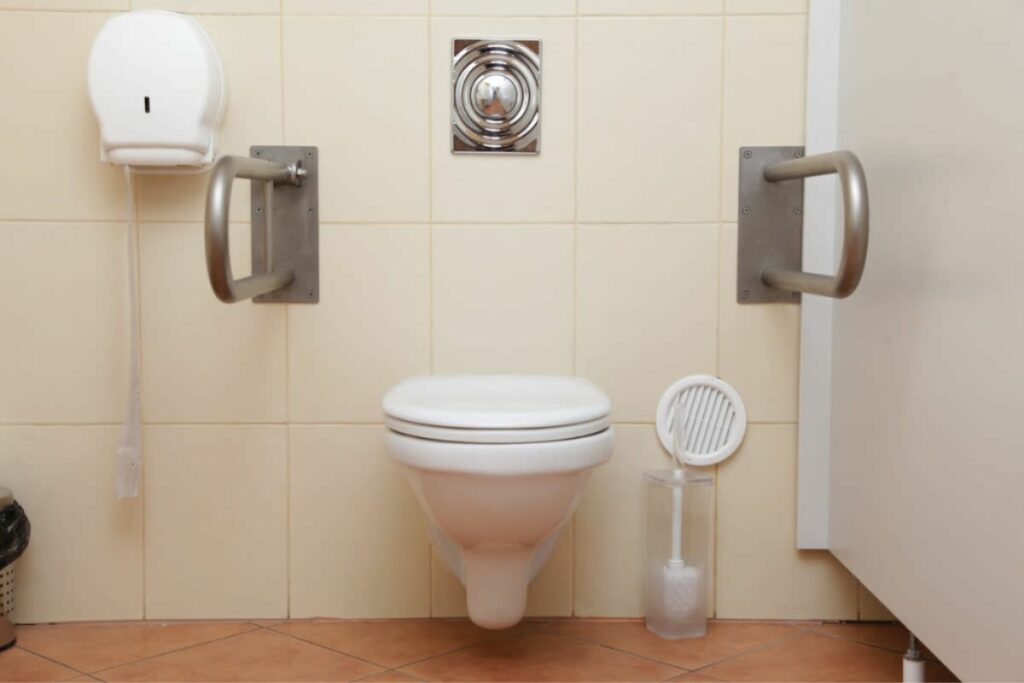
Toilet Bowl Height
A deep toilet bowl is not comfortable for the disabled as it restricts movements. It is preferred that you get a normal bowl height toilet for footrests to pass below the ball.
Toilet Seat Height
You need to consider the height of the toilet seat so that the person is comfortable and does not experience any kinds of back or lower body aches.
Wheelchair Leg Rests
When you have limited space in your toilet stall, you make sure to utilize every inch of toilet space. If you use a wall-hanging toilet that has clear space beneath, it provides enough space for your wheelchair leg rests.
Weight Capacity
While buying an accessible toilet, check for weight capacity to avoid any sorts of accidents and losses in the future.
ADA Signage
Once your toilet construction is finished, do not hesitate to get ADA signage. This will enable individuals to identify the restroom for people with disabilities and know where everything is located.
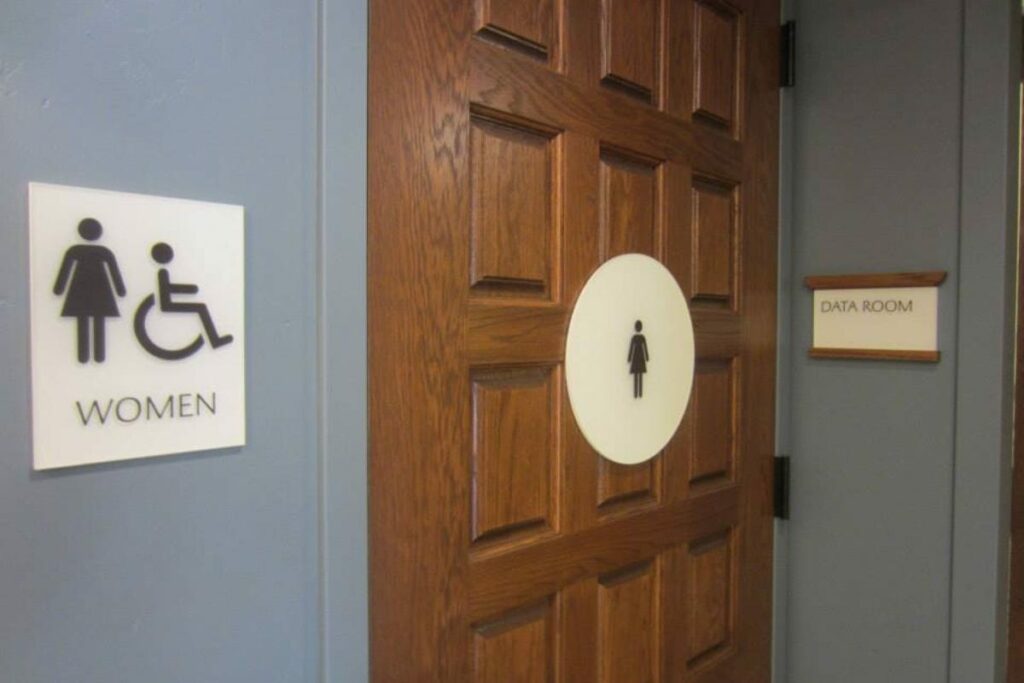
You need to make sure that you’re following the right standards while putting up signage such as:
- No signs should be placed directly on any doors.
- The signs must not be higher than 60″ from the floor, and they must be at least 48″ from the floor.
- Signs must be posted on the latched side of the door on the wall.
Conclusion
If you are looking forward to making your toilet more accessible for all your family members, you must work according to the Americans with Disabilities Act, which provides a set of guidelines for ADA-compliant toilets.
The ADA requisites are important in choosing a toilet that is accessible for all users including those who have physical impairments.
By following these tips, you can make your bathroom more accommodating to everyone without any trouble.

Amos Christen graduated with a bachelor’s degree in Interior Design from Drexel University — Philadelphia, PA. Since 2003, Amos has worked with top interior design professionals in this area, including architects and interior/graphic/lighting designers. As a skilled interior designer, Amos Christen is highly versed in fine arts and crafts and uses that to supplement his main area of expertise. He often publishes articles related to home décor on several websites, including Sprucetoilets.com, Sprucebathroom.com, and Mybesuitedhome.com. He also contributes to leading interior design magazines.
